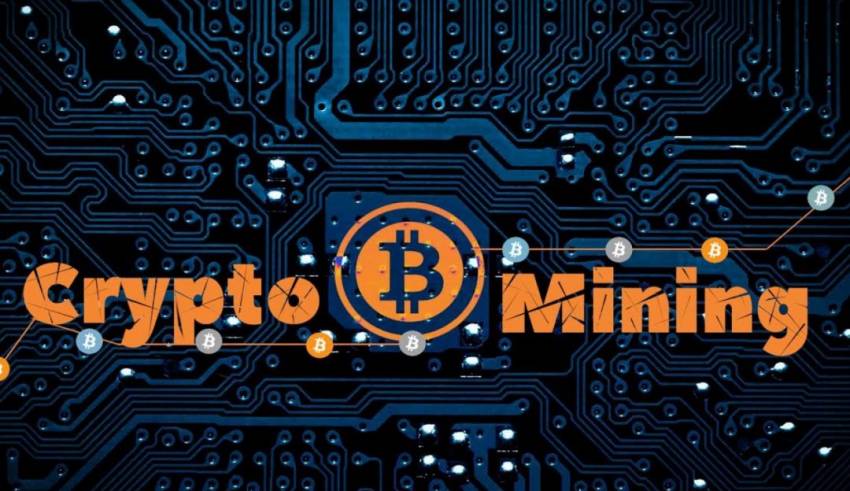Top 100 cryptocurrency
Cryptocurrency mining is the process of adding new blocks to a blockchain and earning cryptocurrency rewards in return. Cryptocurrency miners use computer hardware to solve complex mathematical problems. https://bloggerpokertour.com/ These problems are very resource-intensive, resulting in heavy electricity consumption.
Unlike some other forms of cryptocurrency, Tether (USDT) is a stablecoin pegged to the value of US$1. This is achieved by having a 1-1 backing between the token and USD which hypothetically keeps a value equal to one of those denominations because one token should always be able to be redeemed for one dollar. In theory, this means Tether’s value is supposed to be more consistent than other cryptocurrencies, and it’s favoured by investors who are wary of the extreme volatility of other coins.
Finding the perfect crypto wallet can be a bit tricky, as the best one for you will depend on your specific needs and preferences. Crypto wallets come in different types, such as hardware and software wallets, each with its own pros and cons. Don’t forget to consider factors like security, ease of use, and compatibility with various cryptocurrencies when selecting a wallet. To help you make an informed decision, we recommend reading our crypto wallet review of the Best Crypto Wallets for Australians.
What is cryptocurrency mining
Most pools use a payout system based on how much work you contribute. For instance, if you have a GPU providing 121 mega (million) hashes per second and the pool has a total hash rate of 121 exa (quintillion) hashes per second, your reward, based on the shares of work you contributed, would be very small.
At the heart of Bitcoin mining is the hash. The hash is a 64-digit hexadecimal number that is the result of sending the information contained in a block through the SHA256 hashing algorithm. This part of the process takes little time to complete—in fact, you can generate a hash in under a second, pasting some content into an online SHA256 hash generator. This is the encryption method used by Bitcoin to create a block hash. However, decrypting that hash back to the content you pasted is the difficult part: a 64-digit hash can take centuries to decode with modern hardware.
The difficulty level of the puzzle is determined by the number of users and the computational power of the network. As more miners join, the difficulty level of the puzzle increases to compensate so that the rate of block creation doesn’t increase. This ensures a steady currency production; currently, the average time of a block formation is 10 minutes.
For those interested in mining, delving into the easiest methods and identifying the most profitable cryptocurrencies to mine is essential. This knowledge can equip you with the necessary insights to begin or enhance your mining journey. Understanding these aspects is crucial, whether you’re just starting out or looking to optimize your current mining strategies in the ever-evolving world of cryptocurrency.
Another incentive for Bitcoin miners to participate in the process is transaction fees. In addition to rewards, miners also receive fees from any transactions contained in that block. When Bitcoin reaches its planned limit of 21 million (expected around 2140), miners will be rewarded with fees for processing transactions that network users will pay. These fees ensure that miners still have the incentive to mine and keep the blockchain network going. The idea is that competition for these fees will cause them to remain low after halving events are finished.

Cryptocurrency stocks
Each of our coin data pages has a graph that shows both the current and historic price information for the coin or token. Normally, the graph starts at the launch of the asset, but it is possible to select specific to and from dates to customize the chart to your own needs. These charts and their information are free to visitors of our website. The most experienced and professional traders often choose to use the best crypto API on the market. Our API enables millions of calls to track current prices and to also investigate historic prices and is used by some of the largest crypto exchanges and financial institutions in the world. CoinMarketCap also provides data about the most successful traders for you to monitor. We also provide data about the latest trending cryptos and trending DEX pairs.
Chipmakers Nvidia and AMD don’t deal with cryptocurrencies directly, but the two semiconductor companies are the leading designers of graphics processing units (GPUs). Best known for powering high-end video game graphics, GPUs now enable computing-intensive applications such as data centers, artificial intelligence, and the creation of crypto assets.
Coinbase Global (COIN -1.58%), a top cryptocurrency trading exchange, made its initial public offering (IPO) in April 2021. The company is a popular platform for purchasing major cryptocurrencies such as Bitcoin, Ethereum, and Cardano (ADA 0.02%), allowing users to trade more than 250 altcoins.
Both Nvidia and AMD look to further cement their positions as leaders in chip technology through acquisitions. Nvidia tried to purchase ARM Holdings (ARM -1.44%), which licenses chip architecture design for data centers and smartphones, and AMD wanted to acquire field-programmable chip leader Xilinx. Nvidia had to give up on its ARM deal, but AMD completed the Xilinx buyout in February 2022. With or without the acquisitions, Nvidia and AMD are poised to continue taking market share of the semiconductor industry and are leading the way in developing more emerging technologies, such as blockchain ledgers.
PayPal operates its own digital wallets and allows users to buy, transfer and sell cryptocurrencies, including Bitcoin, Ethereum, Bitcoin Cash (BCH) and Litecoin (LTC). PayPal users can check out and pay using crypto at millions of online merchants. PayPal’s mobile wallet Venmo also allows users to buy and sell cryptocurrency.
Michael Adams is a Cryptocurrency and Investing Expert Editor. He’s researched, written about and practiced investing for nearly two decades. As a writer, Michael has covered everything from stocks to cryptocurrency and ETFs for many of the world’s major financial publications, including Kiplinger, U.S. News and World Report, The Motley Fool and more. Michael holds a master’s degree in philosophy from The New School for Social Research and an additional master’s degree in Asian classics from St. John’s College.

